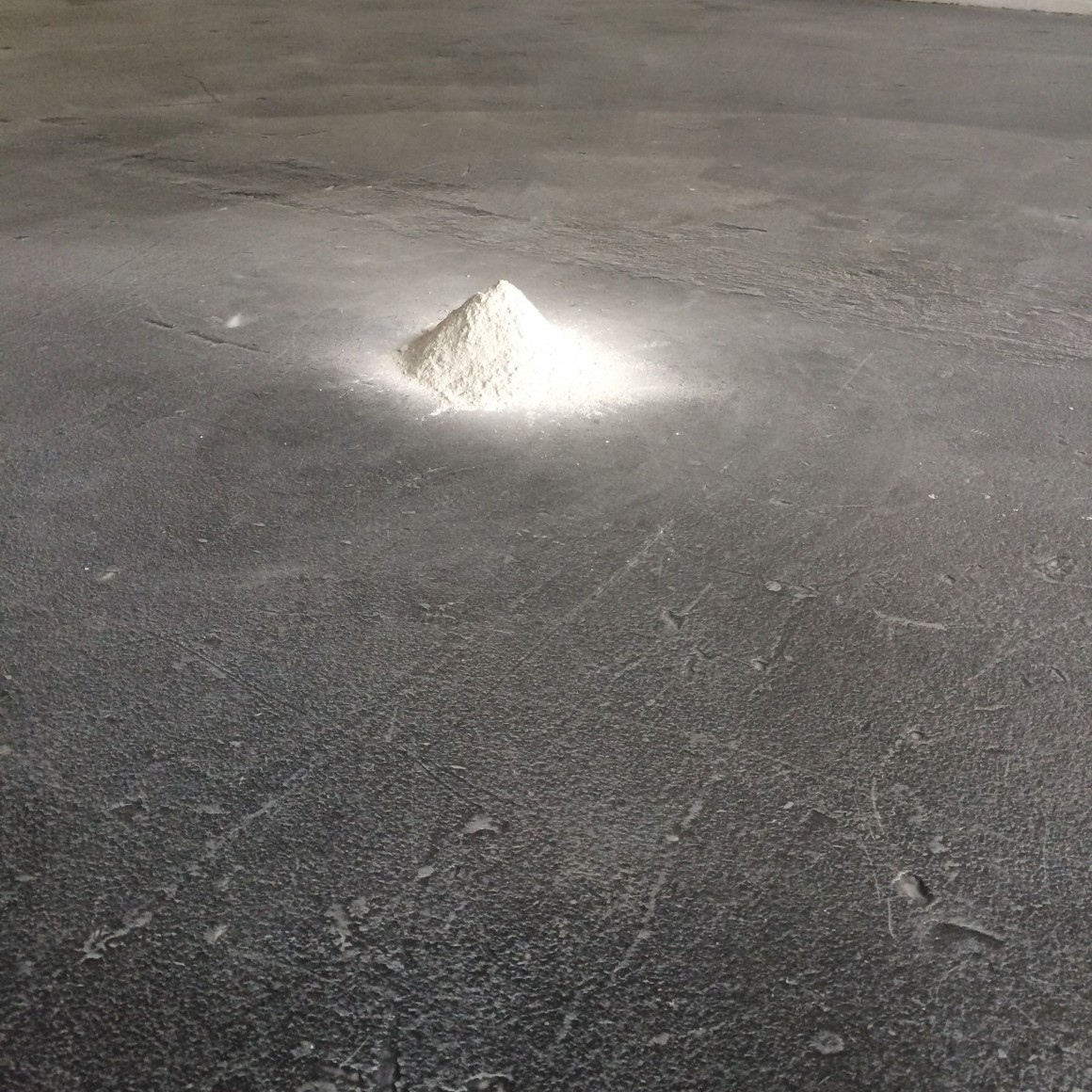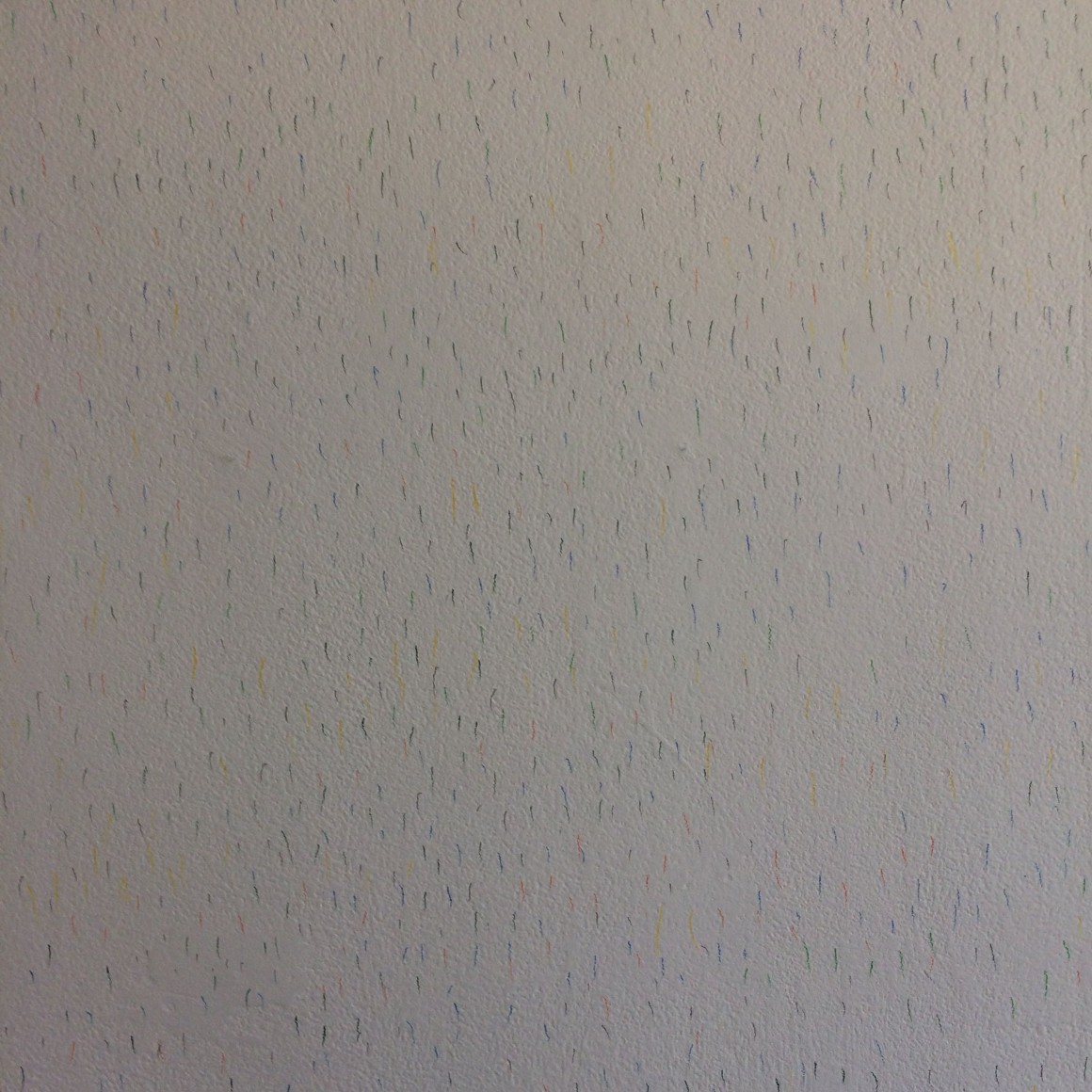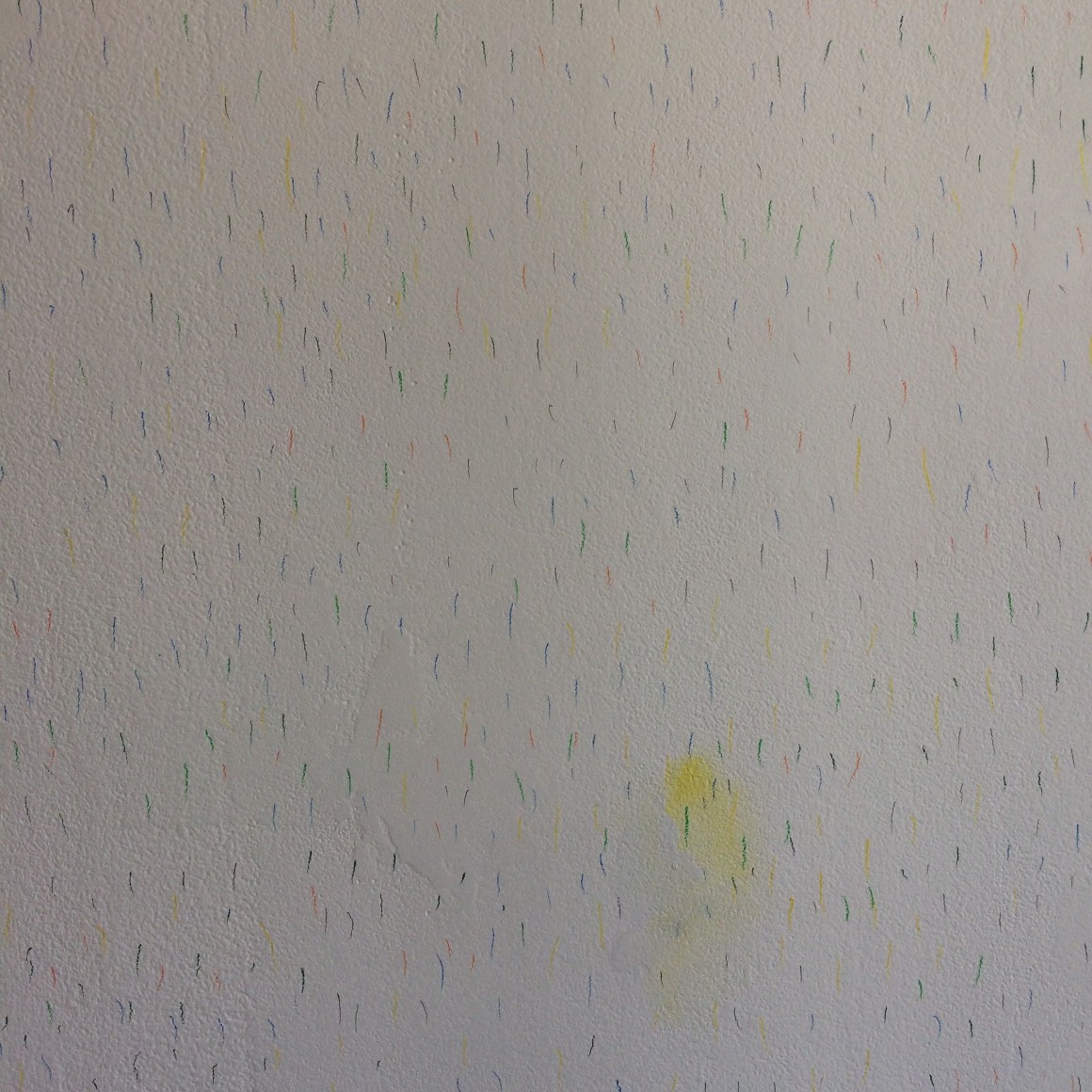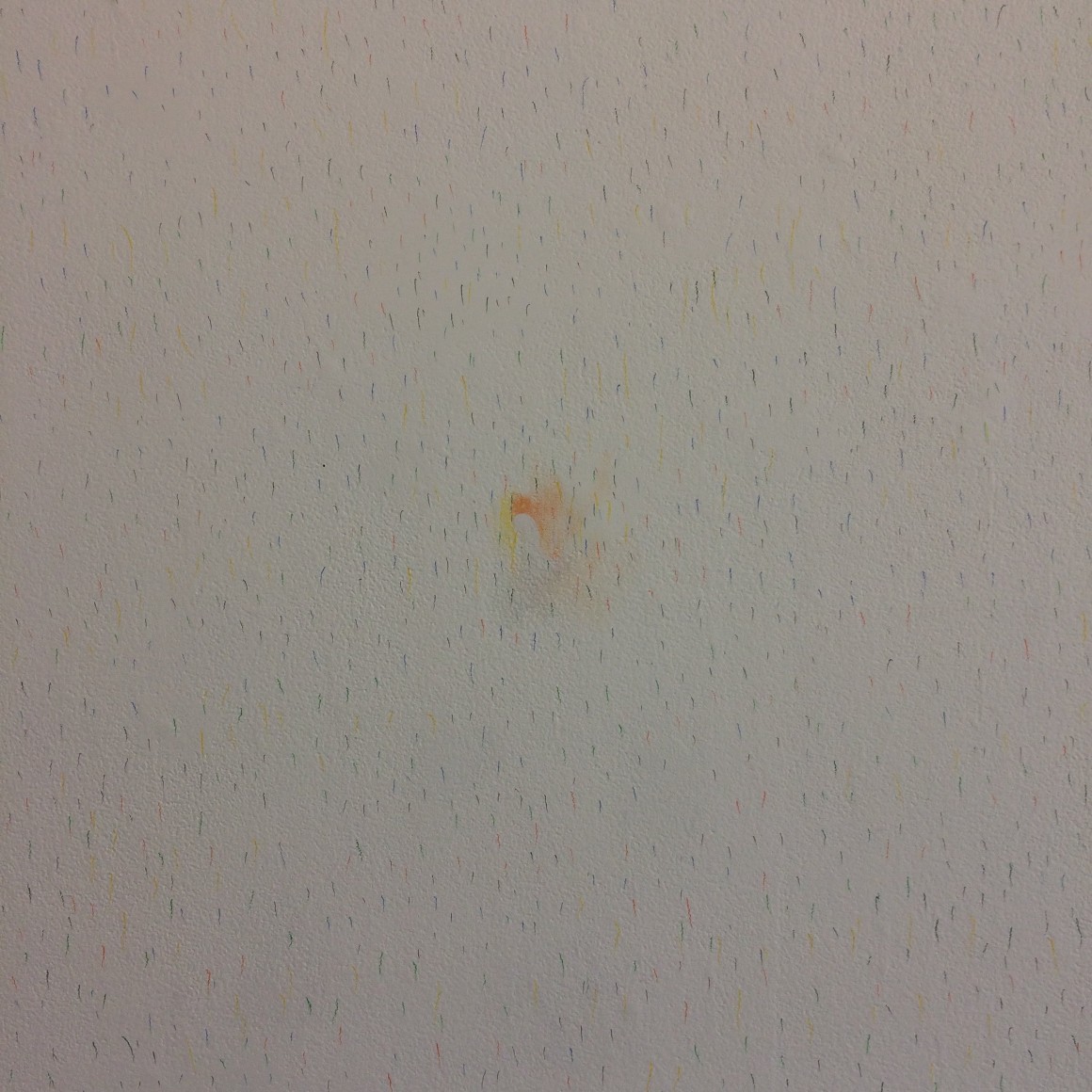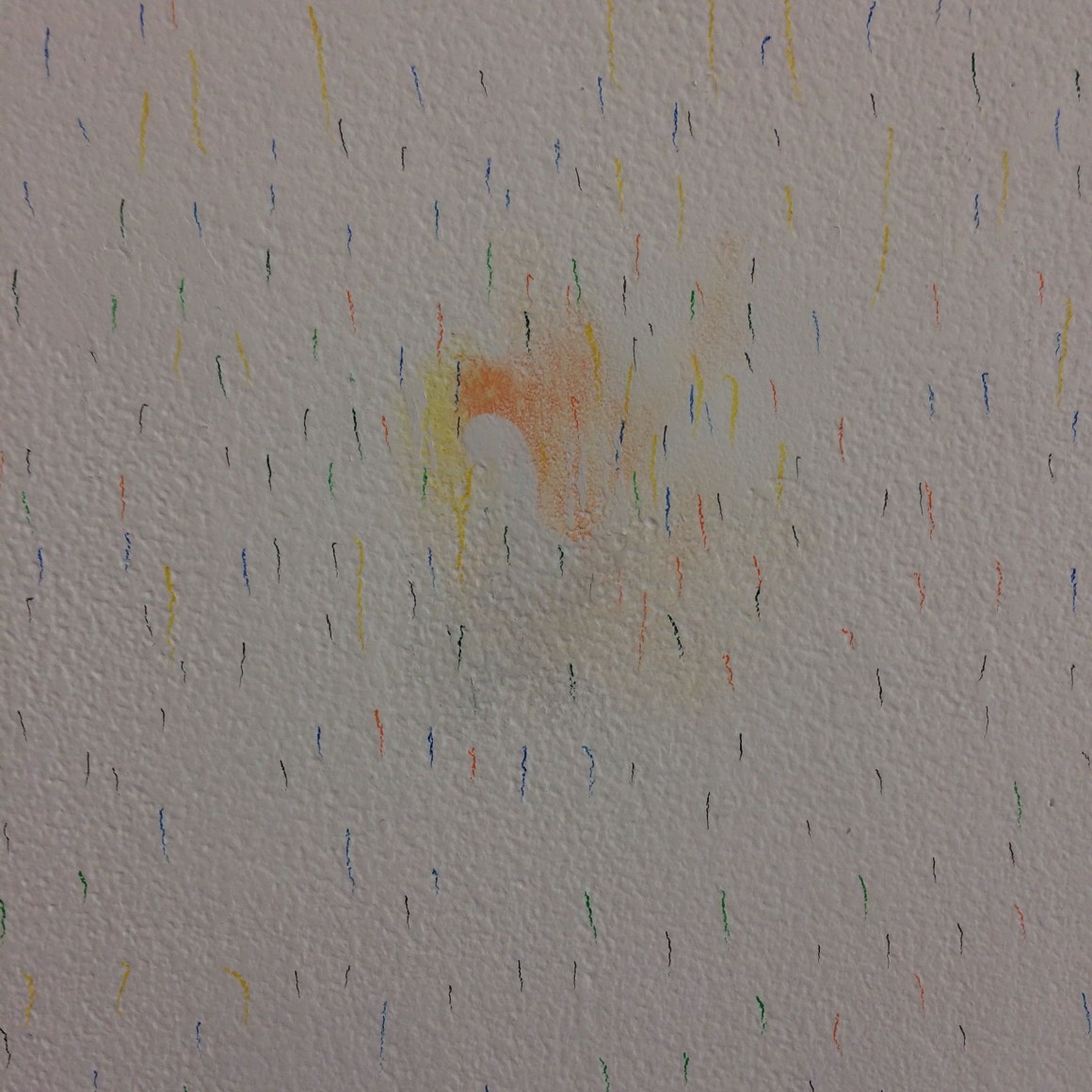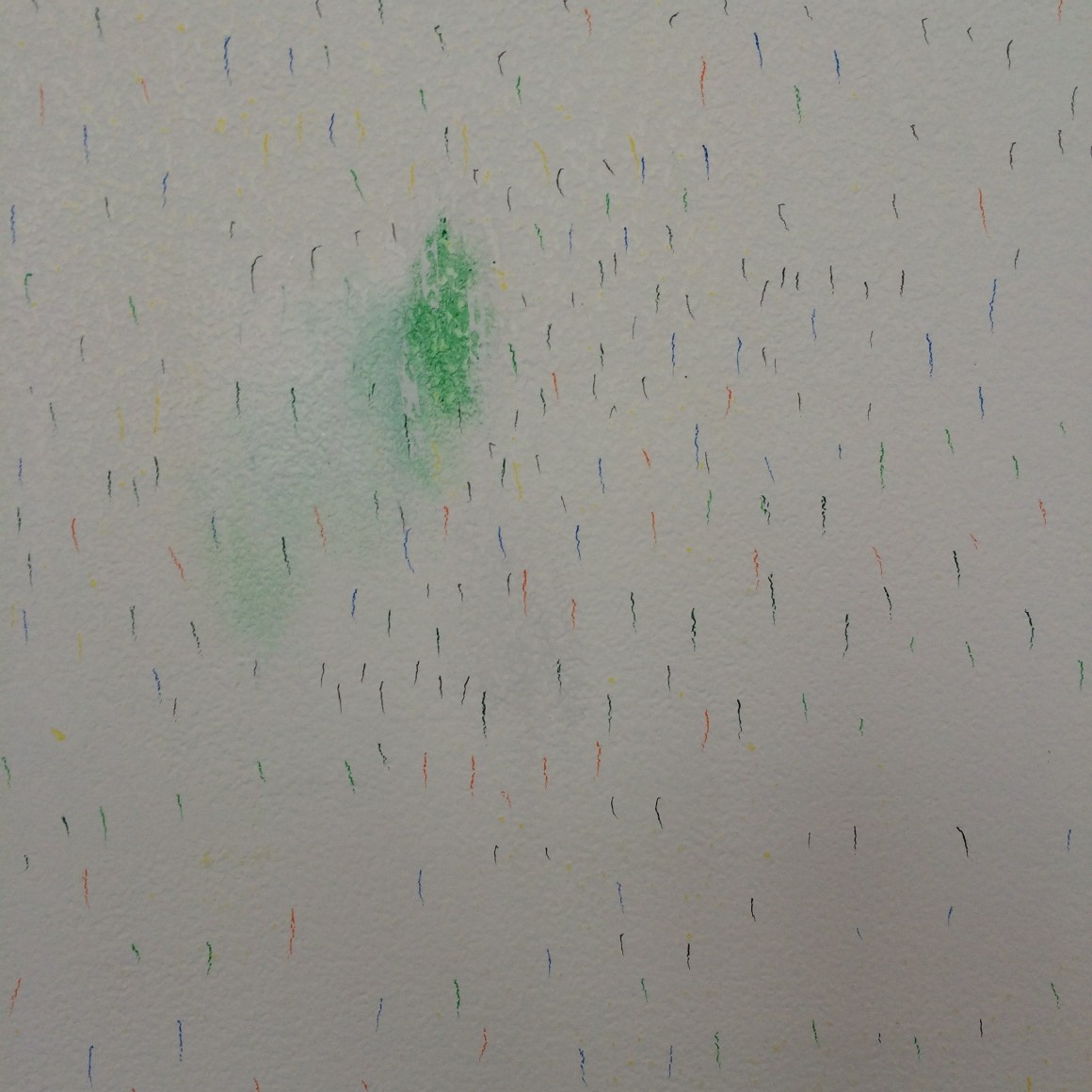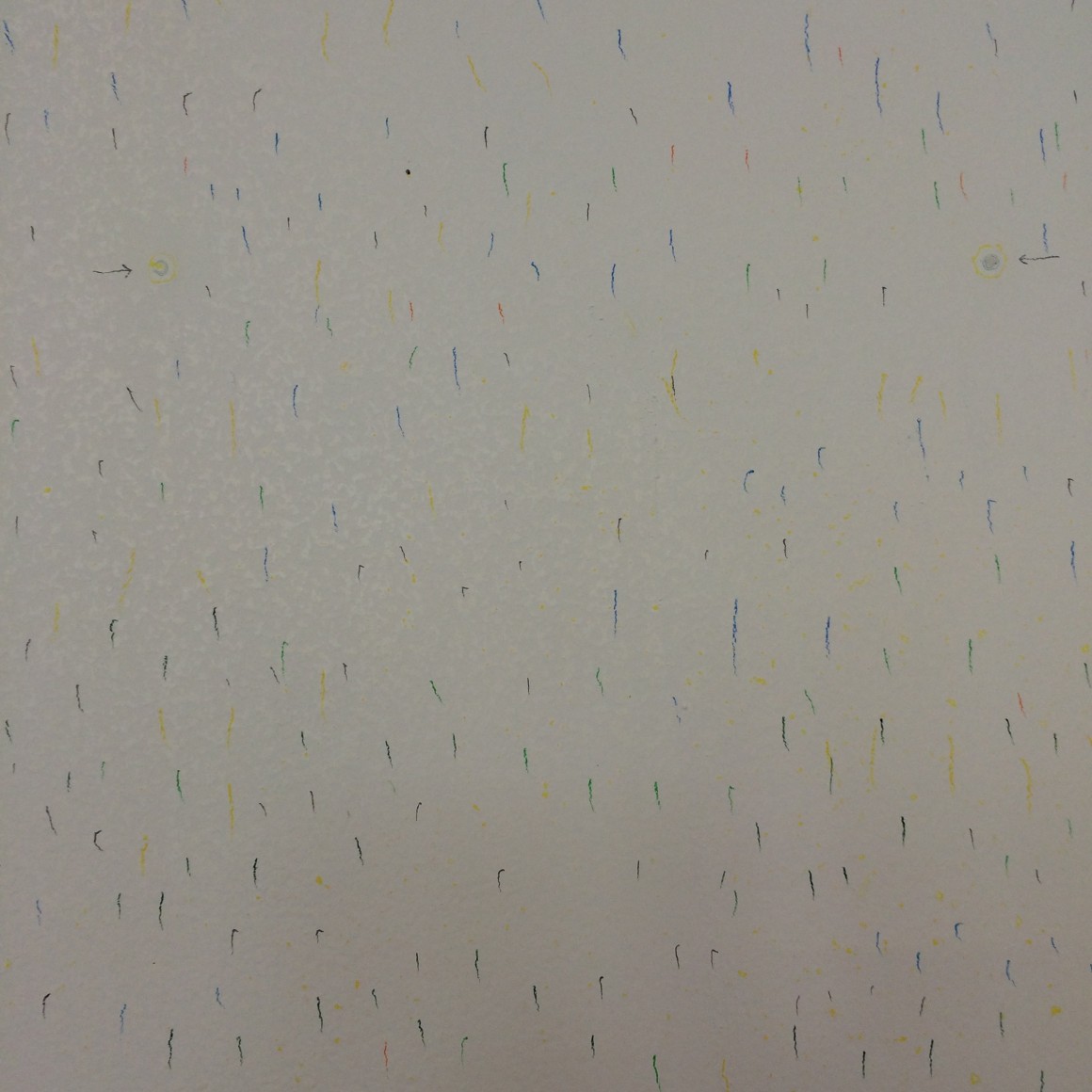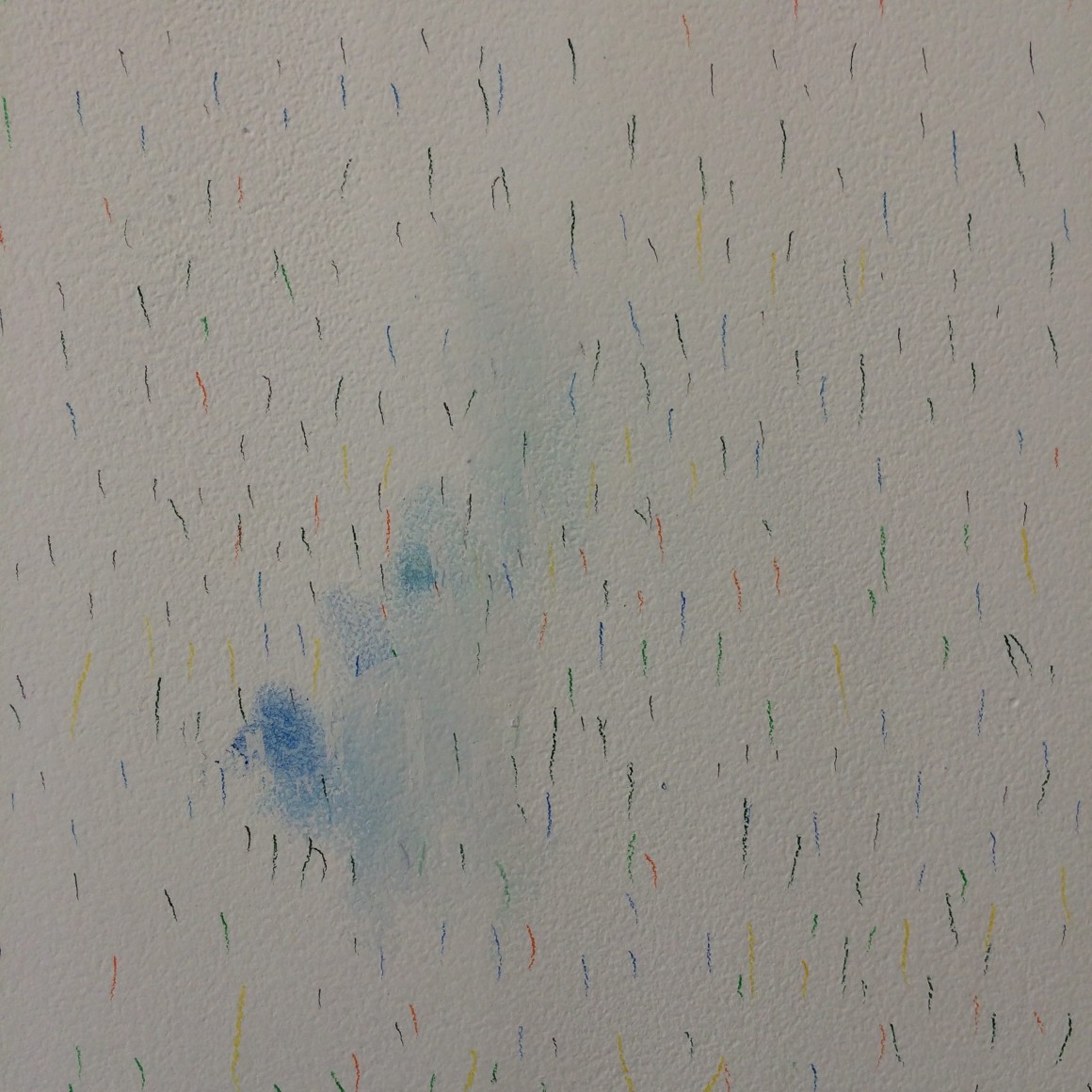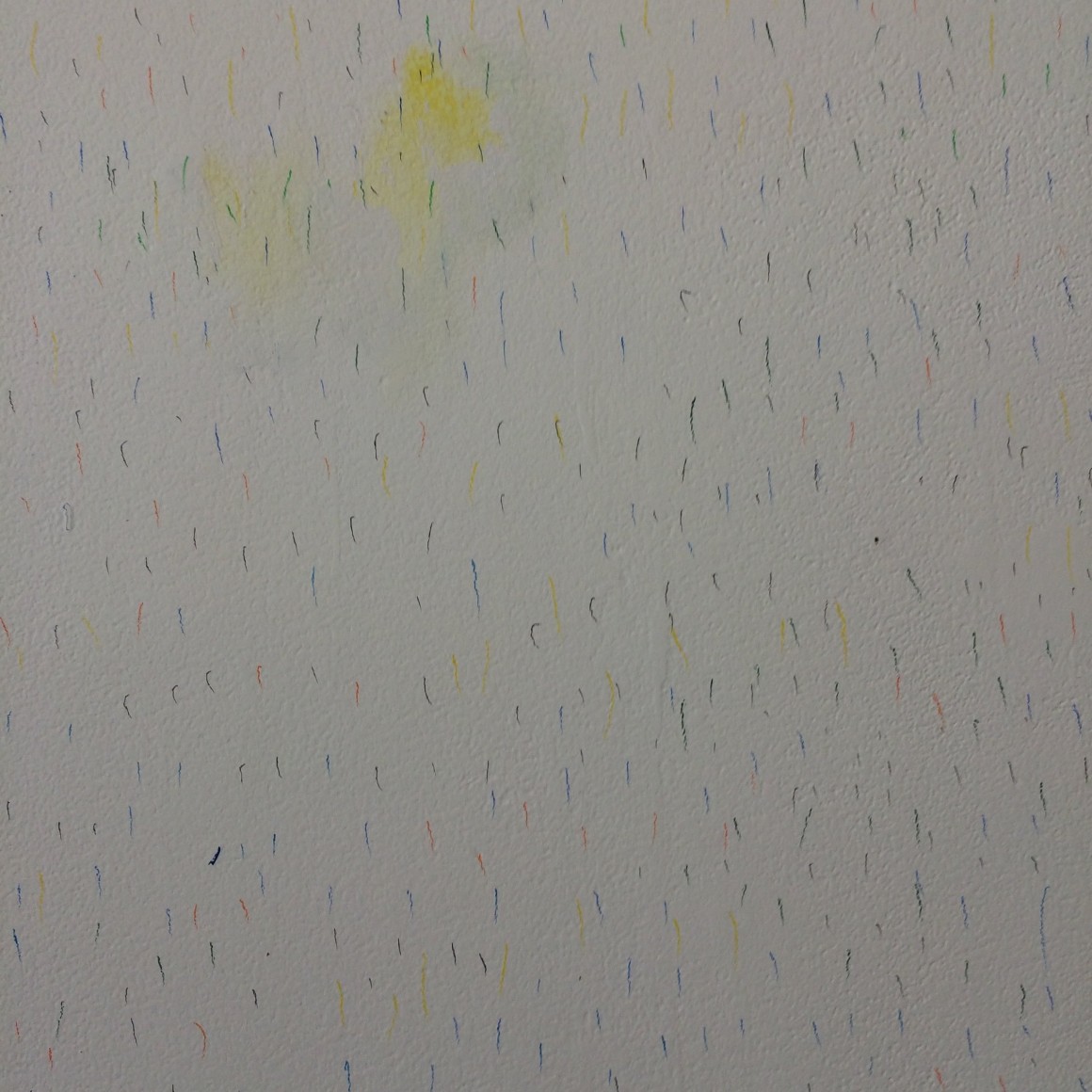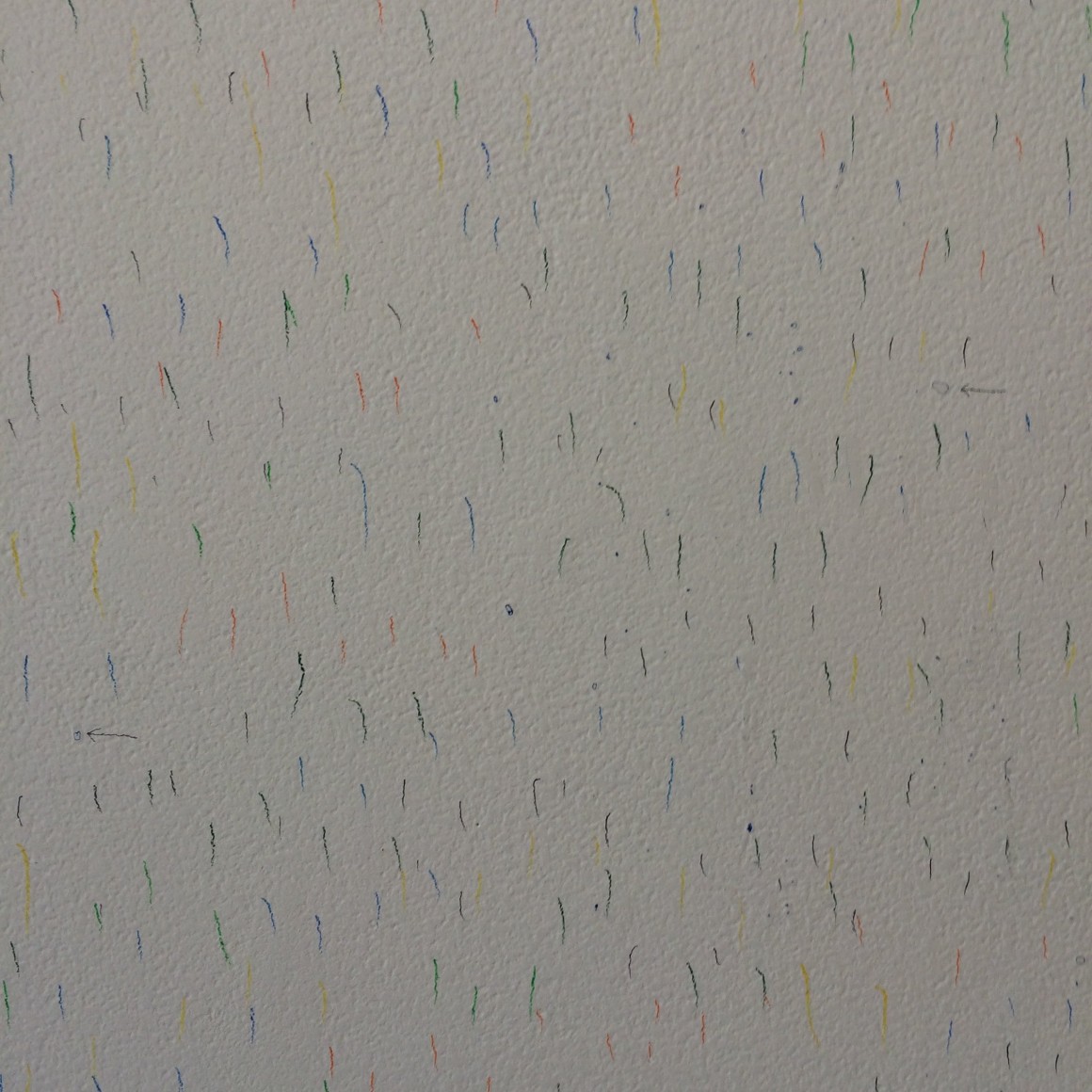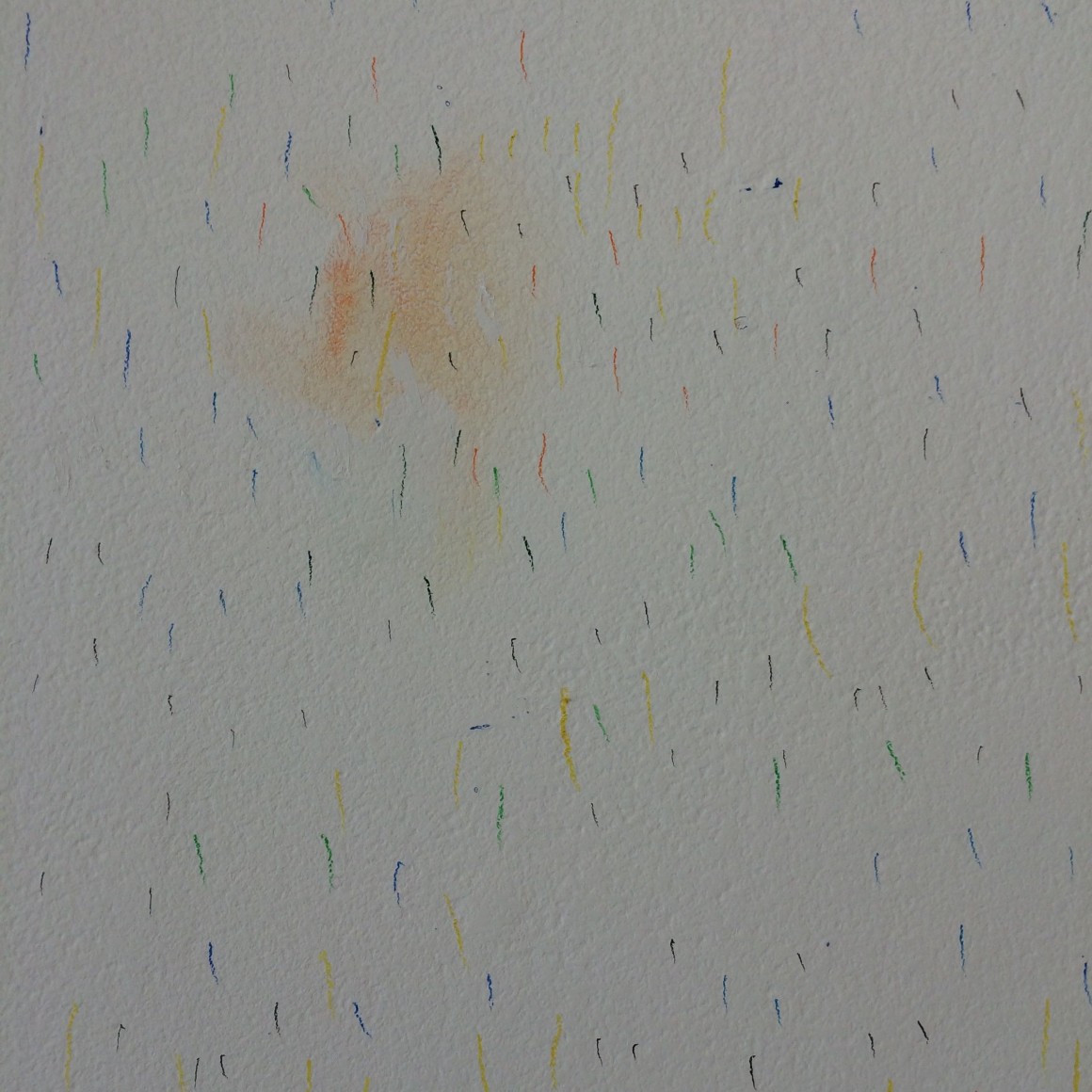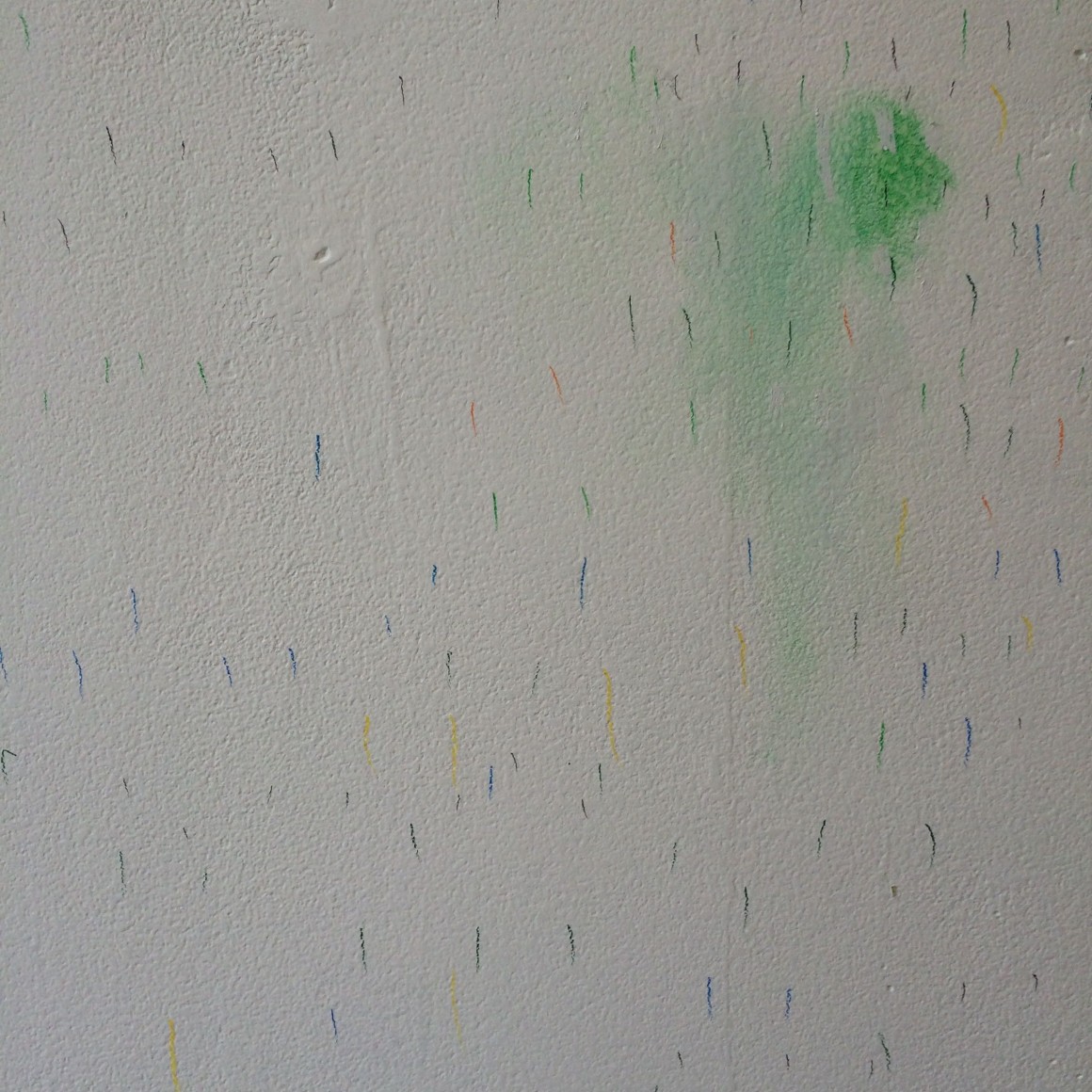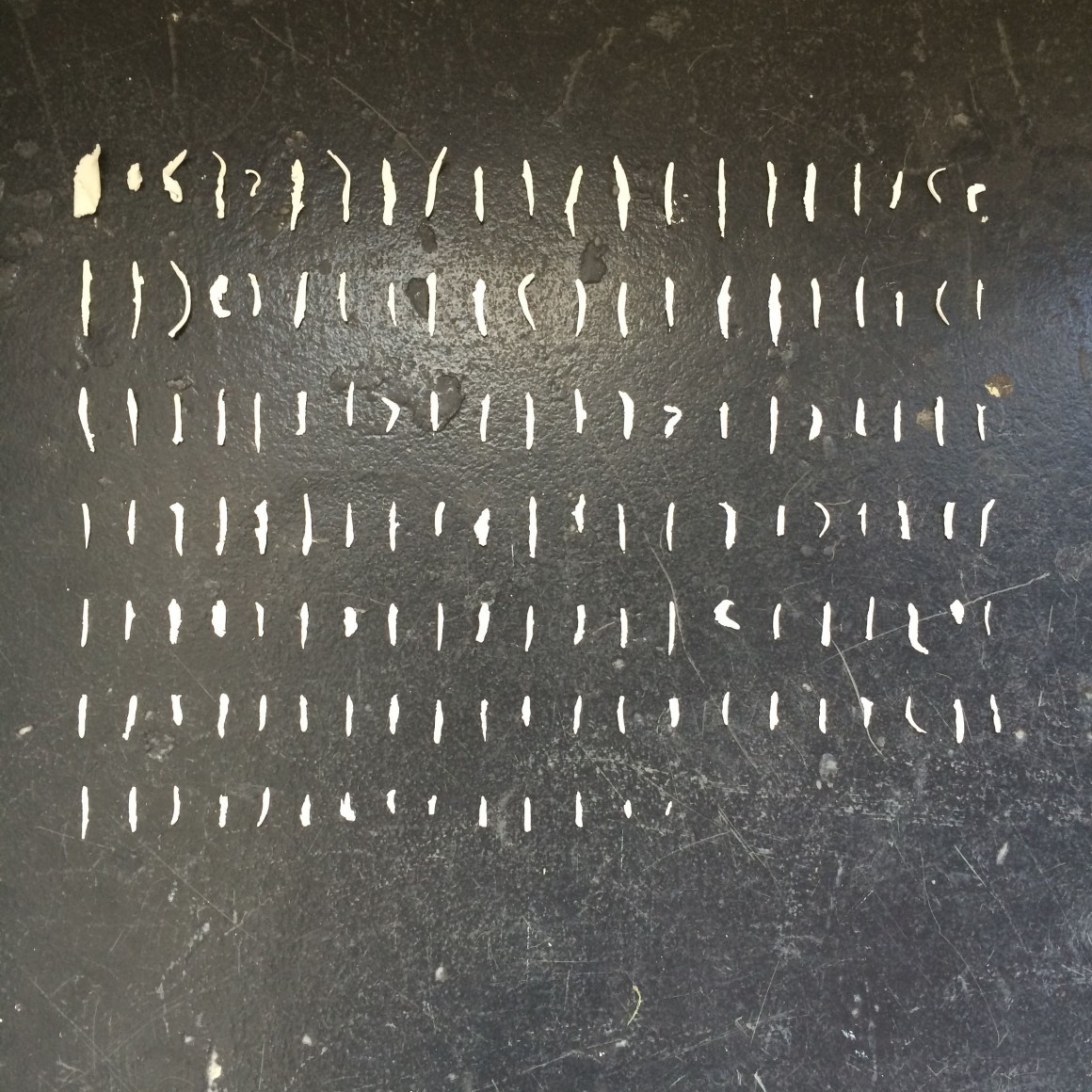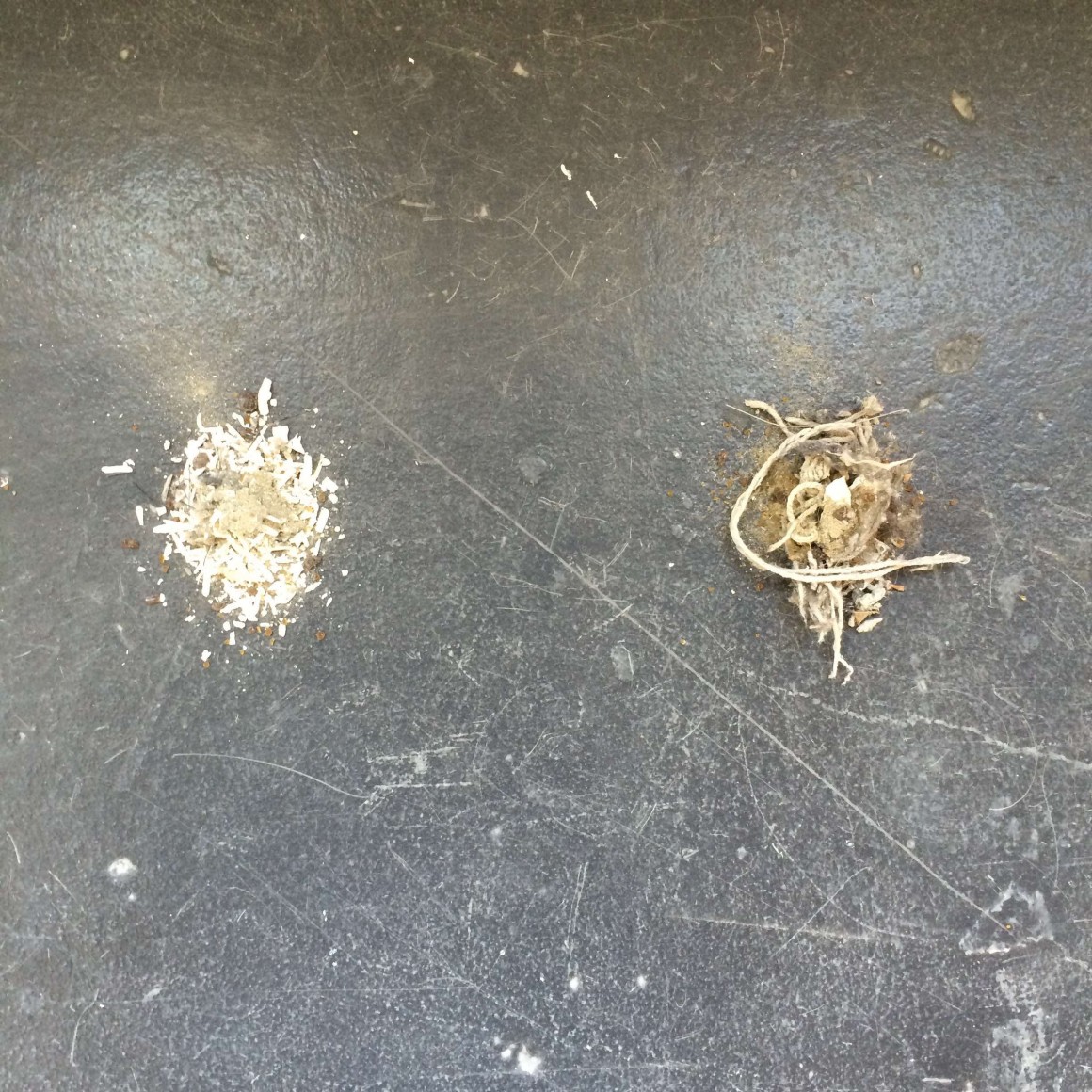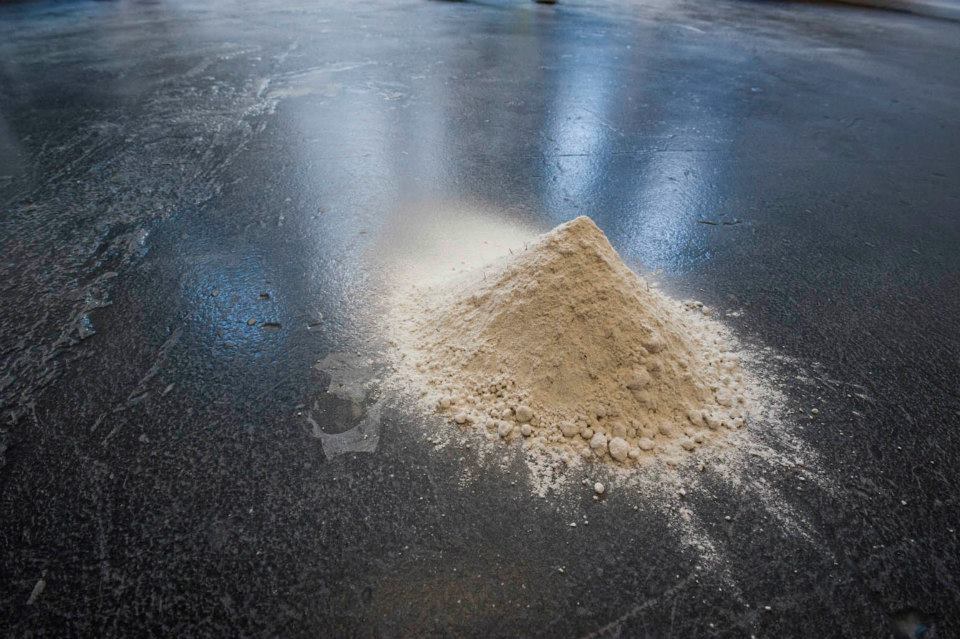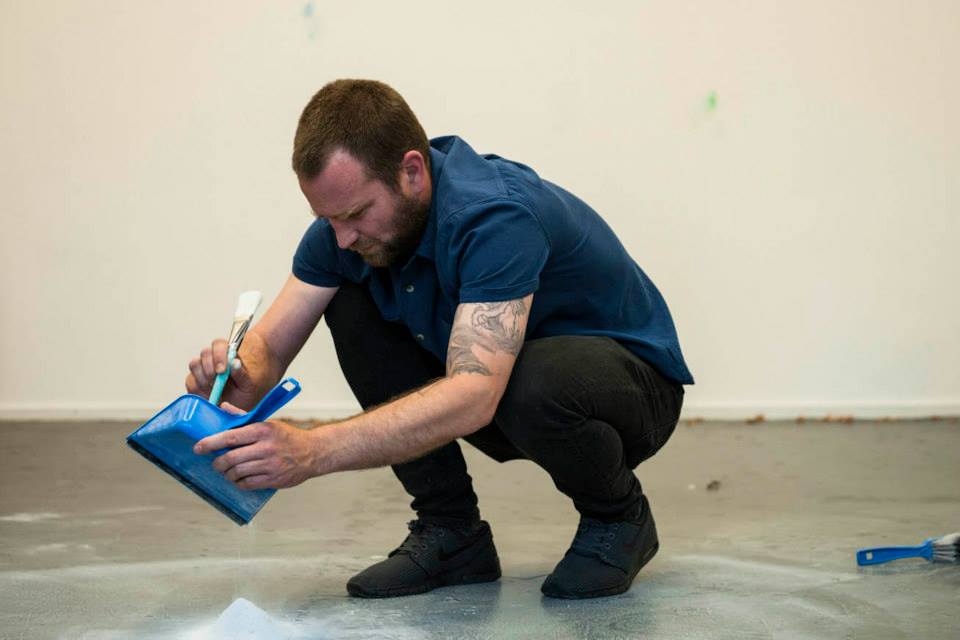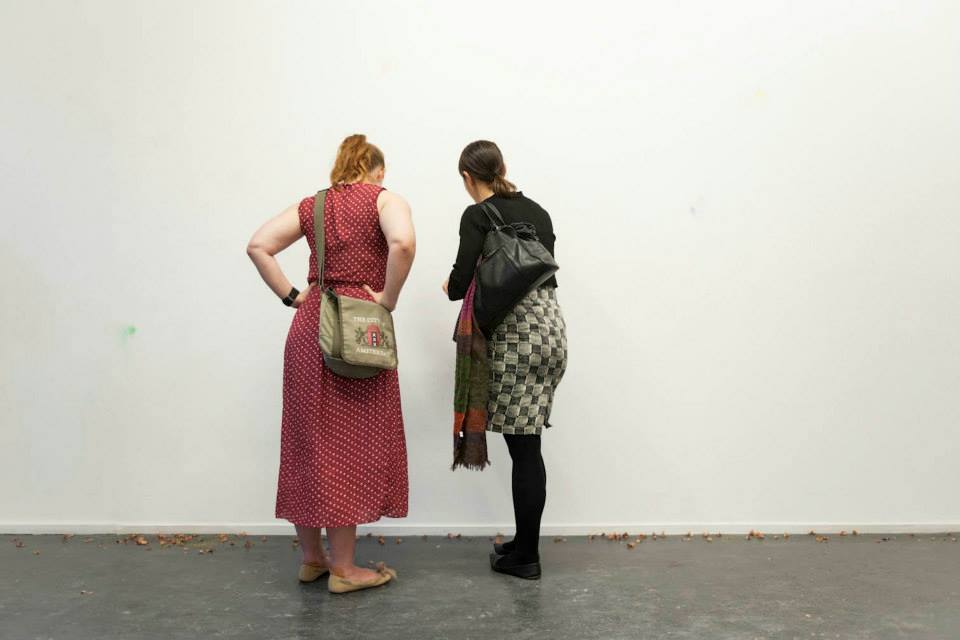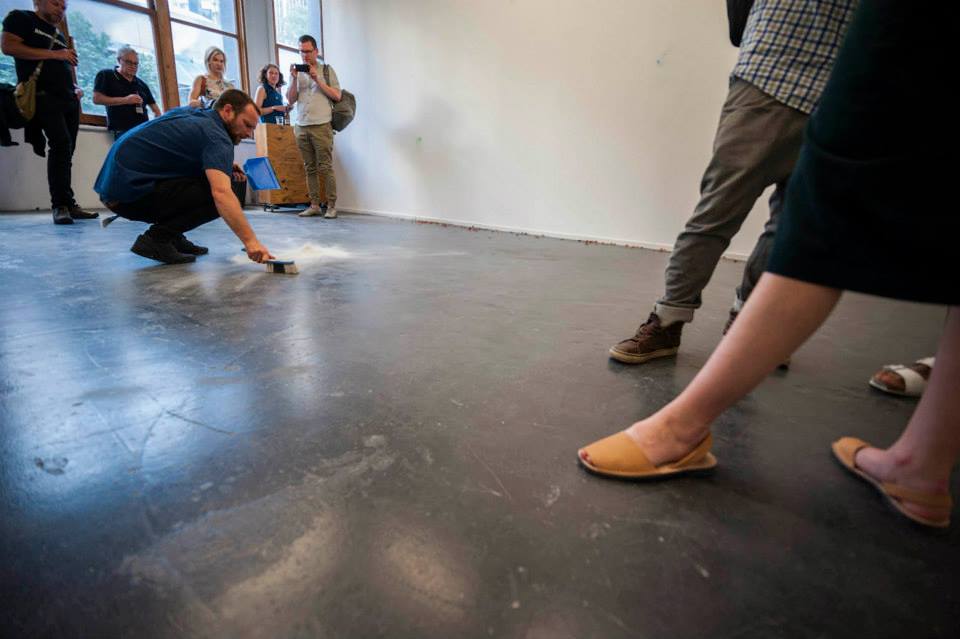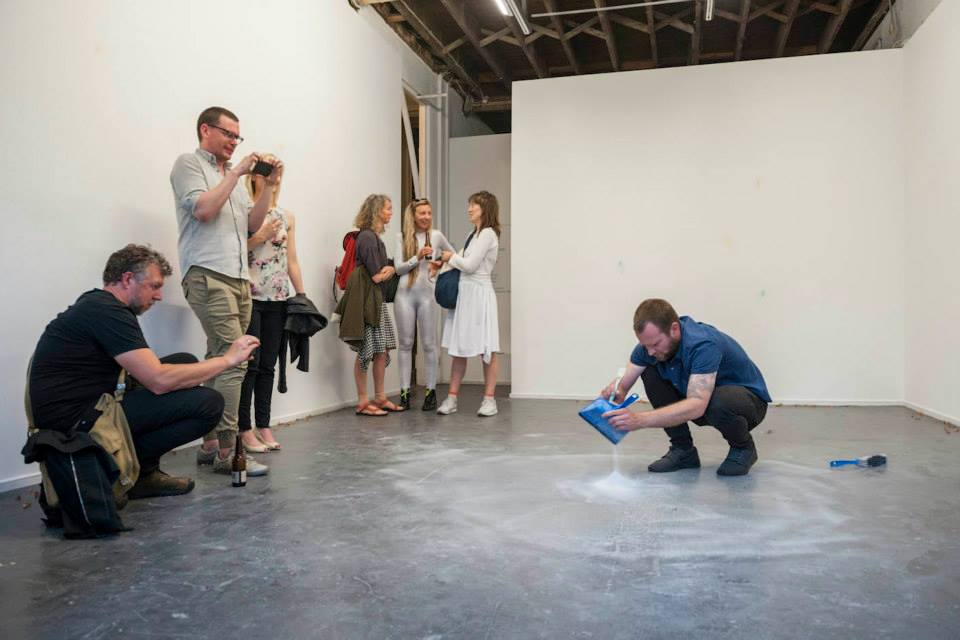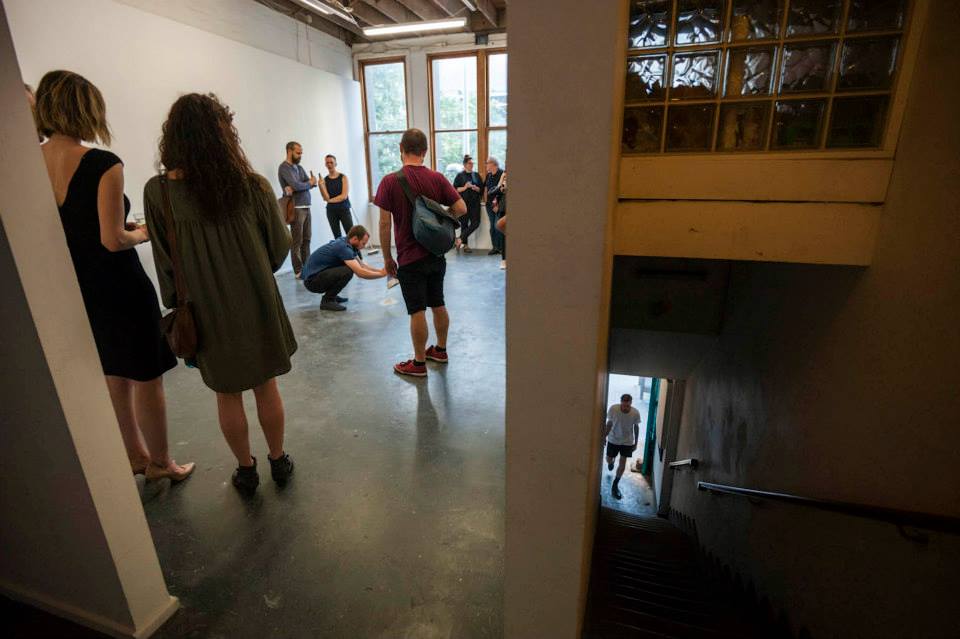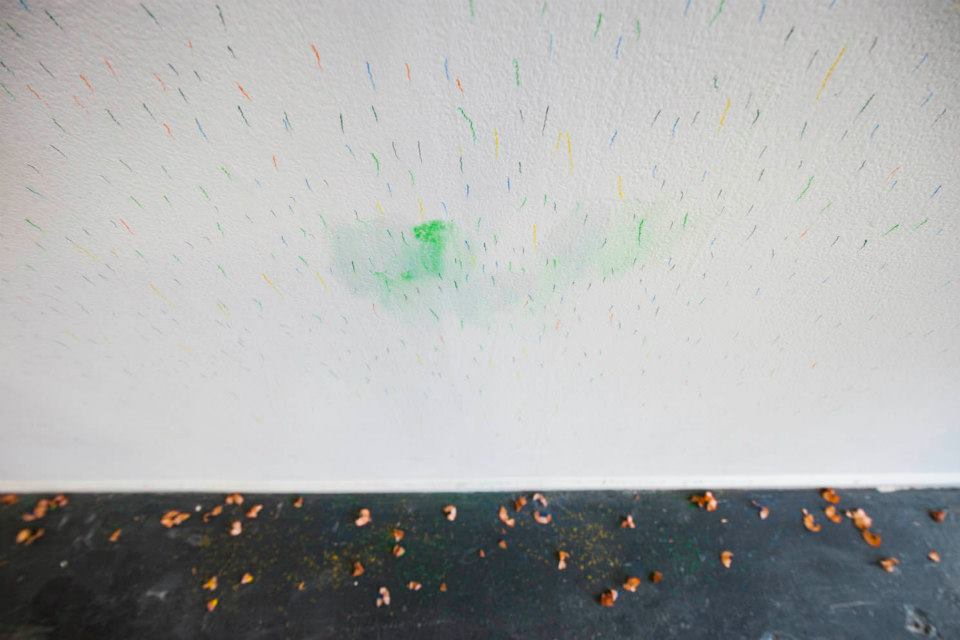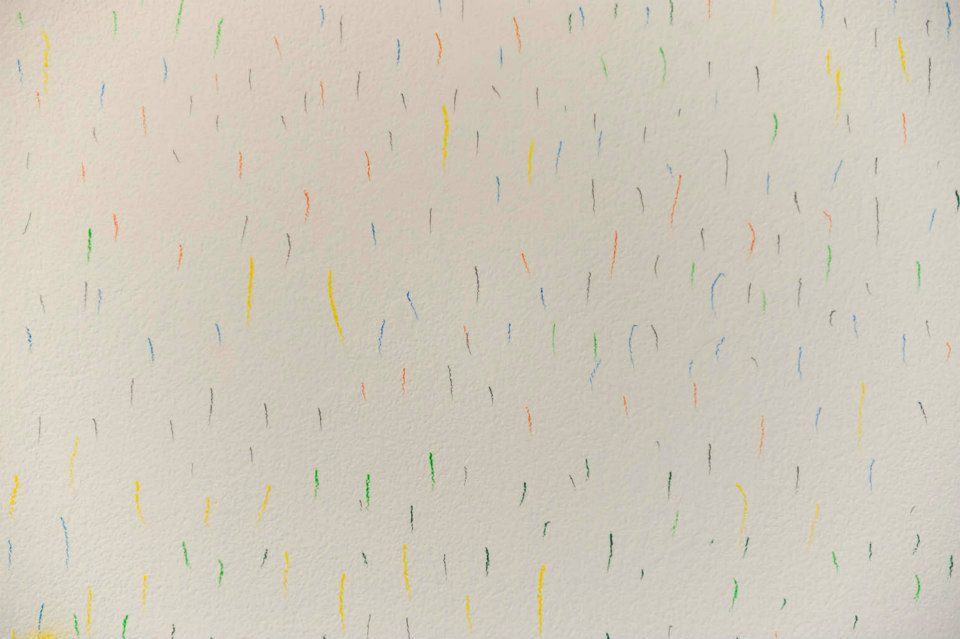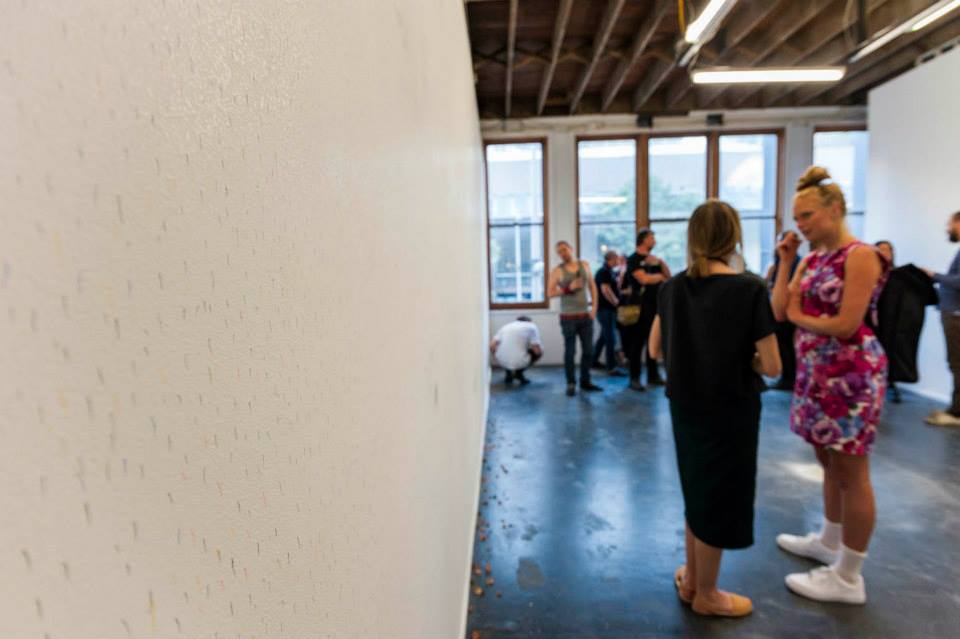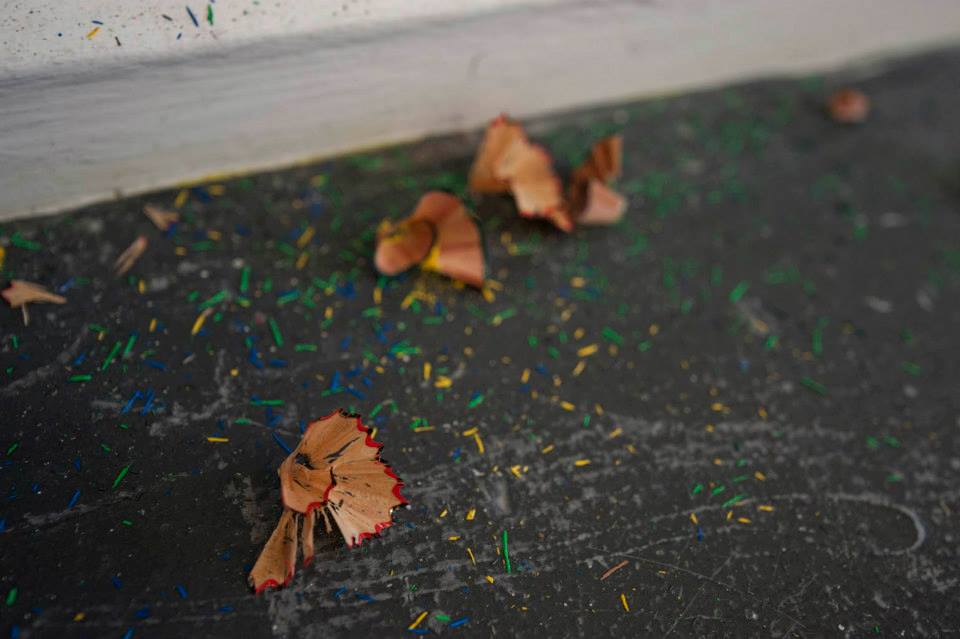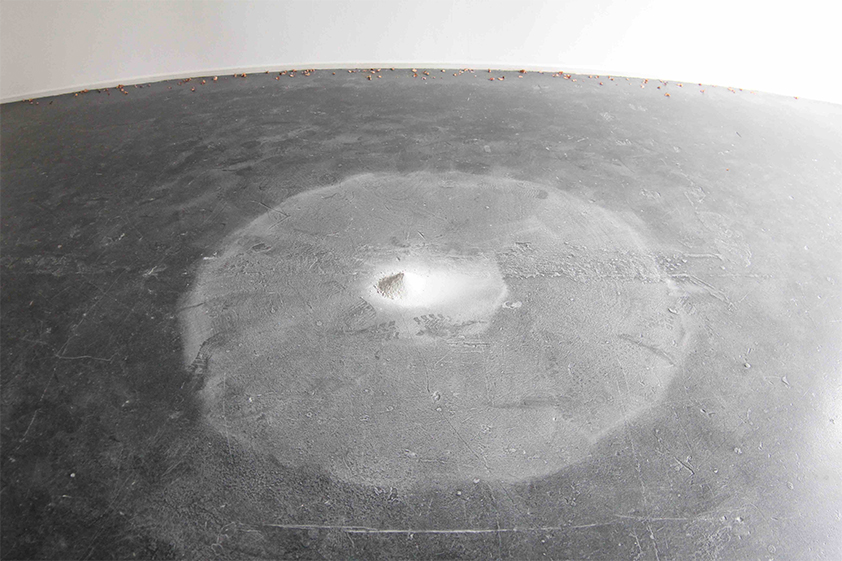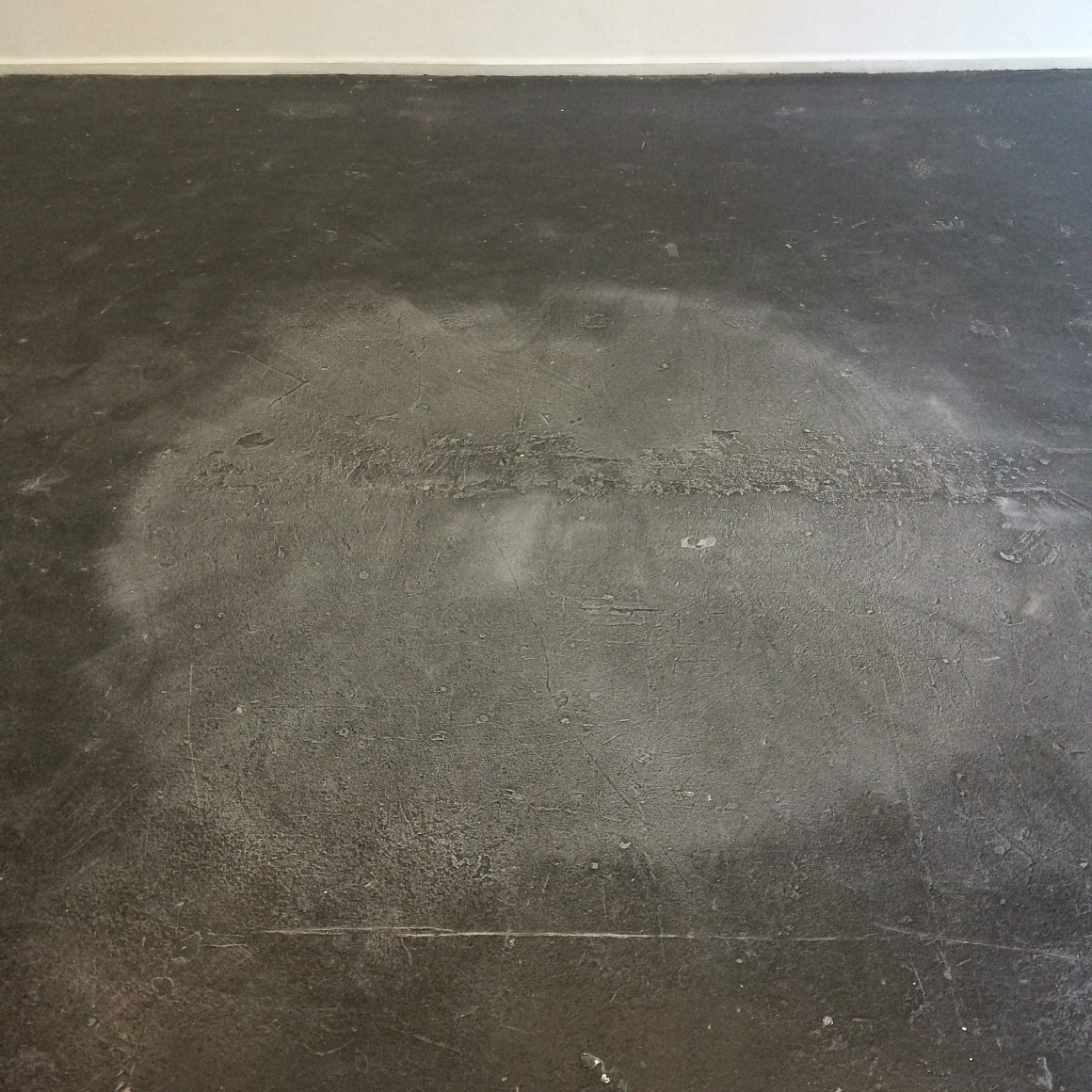situation responsive intervention at Kings ARI, Melbourne.
three days
exhibition 27th October – 22nd November 2015.
Layers of contingency, or, the dusting of modern timepieces:
Thursday 22nd October, 1:45PM:
Sitting down to ponder a potential trajectory for writing about the durational-based intervention Wall Work[ing] 7, questions arise such as: is the artist asking the wall to work for us? Are we asked to consider the wall, through such processes of intervention, as somehow activated and thus as a working utilitarian object? And how does the removal of a layer of paint from the gallery’s surface denote a call to invitation, be it ameliorative or deductive? This thinking comes from the position of a before time, when the material ground of an intended bi-product—that of a pile of dust comprising the top coat of paint from the gallery wall—has not fully been prepared.
Thursday 22nd October, 6PM, Gertrude Contemporary Art Space:
Amelia Barikin, “Sound Fossils and Arch-Fossils: Towards a Mineral Ontology of Contemporary Art.’
The facebook event for the talk is accompanied by an image of what appears to be a close-up of a vinyl LP—the words Emerald Master engraved into its inner section. In fleeting form, this abstract image resembles the cross section of the outer rings of the planet Saturn, with its dark inner core and lighter outer layers. The accompanying abstract takes a detour through Melissa Dubbin and Aaron S. Davidson, Pierre Huyghe and Laurent Grasso, into the accidental discovery of the sonic record of the Big Bang in New Jersey in 1964. I am led ahead, to tomorrow, to thoughts of Laurie Anderson’s O Superman (1981) trailing behind us as we leave our final class for the year. Good-bye looks just like hello(1).
What is the removal of a layer of paint to create a pile of dust, if not the bifurcation of matter onto itself? In other words, the wall and dust occur as a fork in a path. The wall is assumed to look much the same as before it was stripped—still white and still opaque—and yet by its side is the lucrative run-off of pigment and labour excess[ing] all over the floor. The wall may as well have not been touched as far as we can tell, other than for what it has since produced. Does good-bye look just like hello?
Thursday 22nd October, 6PM, RMIT Project Space/Spare Room:
‘Conversations in Formation’ presented as part of the exhibition ‘Beginning in Incompleteness: Works in Formation.’
James Carey discussing ideas around ‘documentation’ with artist Bridie Lunney and Assoc. Professor Suzie Attiwill, Interior Design; Deputy Dean Learning & Teaching (RMIT School of Architecture and Design).
Thursday 22nd October, 6PM, Village Roadshow Theatrette, State Library of Victoria:
Boiler Room Lecture: Slavs and Tatars – ‘Al-Isnad or Chains We Can Believe In’
The audience is introduced to concepts of past and future tense as they are used in the Malagasy language of Madagascar. Here, the past is expressed as before or in front (taloha), while future tense is denoted as after or behind (aoriana). The chain of the lecture’s title refers to the transmission of the Koran in Sufism, as in, we are all present custodians of a deep chain reaction transmitted through language in time.
The shape of time as dust where it settles:
The all-over-ness of James Carey’s intervention—with the sanding of all gallery walls prior to opening—expresses a kind of cleansing or bipartite, disembodied lathering. As with other works that draw on spatial and material relationships between the matter of institutions and our being within them (I am thinking here of Pierre Huyghe’s Timekeeper (1999) and Georgina Criddle’s Before too long (2015)), Carey’s gesture points to the simultaneous flattening out and curvature of time in dust and scratches. Huyghe’s two-dimensional panoptic time devise—comprised of the removal of paint layers from a gallery wall using an orbital sander—creates a concentric, gem-like formation that assumes a position floating on the negative whites of the gallery wall. Criddle’s dust on the other hand gives physical weight to Huyghe’s circular view of time, as a ball of dust and PVA glue accumulatively formed within various domestic and institutional spaces. Carey’s own split objectives of time as two-and-three-dimensional settles somewhere on this triangular path. It is as if the relationship were metaphorically that of a human hand held perpendicular to the body, as viewed from outer space.
(1) The line “good-bye looks just like hello” appears in Laurie Anderson’s work American’s on the Move (1979) and latter in the text Words in Reverse (1980). It analogises an image that appeared on the Apollo 10 spacecraft of a woman and a man, the latter’s right arm raised at his side, palm forward. The image was intended as a sign to potential extraterrestrial life during the mission. Anderson draws on this gesture for its myriad potential readings and as a point of oscillation between extremes.
by Abbra Kotlarczyk
as part of Kings Emerging Writers Program.
opening night images courtesy Kings ARI, Melbourne.
